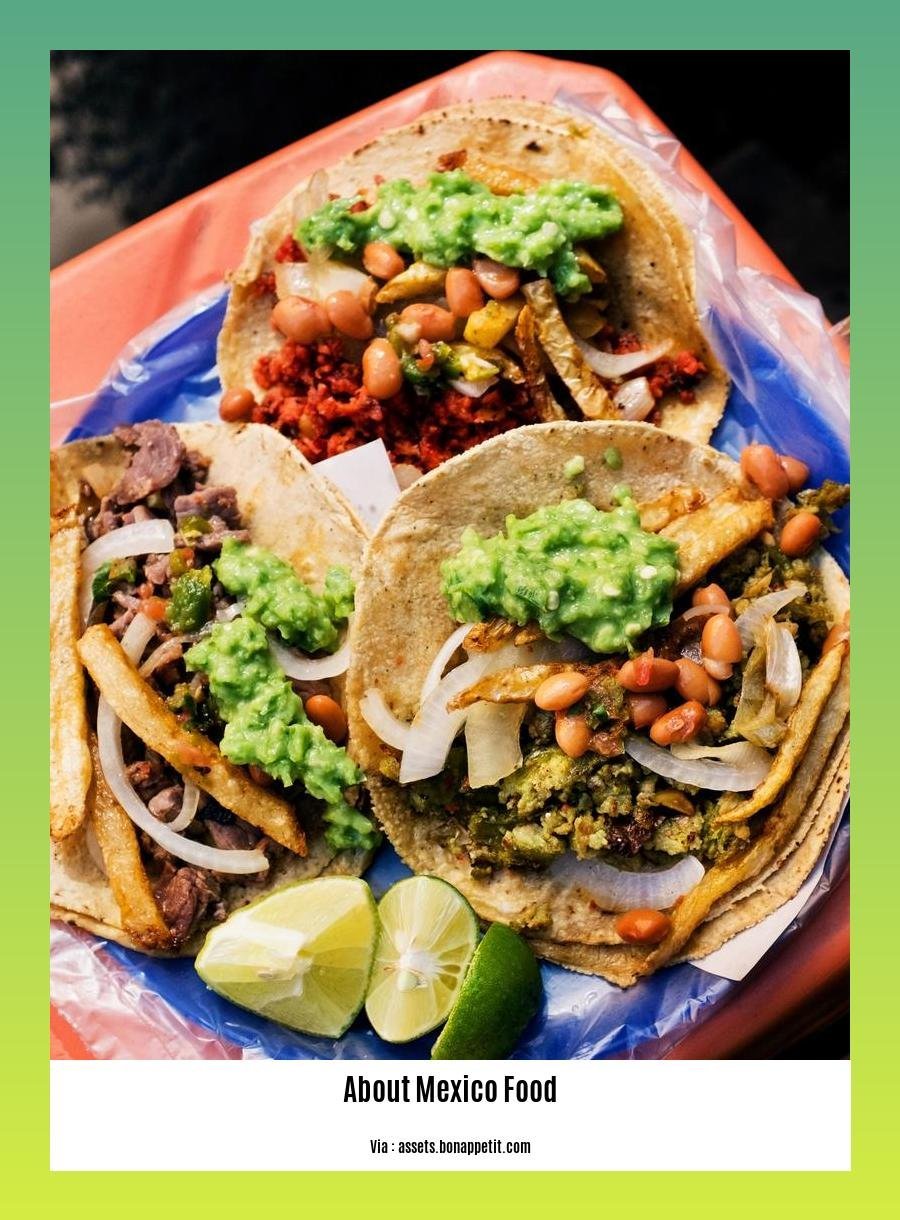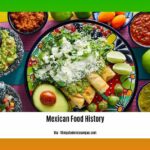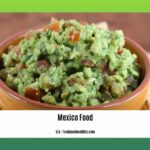Embark on a culinary odyssey through Mexico, a country brimming with a rich tapestry of flavors and traditions. From the bustling markets to the hidden gems nestled within its diverse regions, Mexico’s food heritage is a captivating journey that weaves together history, culture, and the artistry of cooking. Prepare to uncover the fascinating stories behind iconic dishes like tacos, mole, and pozole, and discover the secrets that make Mexican cuisine a beloved global treasure. Join us as we delve into the heart of Mexico’s culinary heritage and unearth the intriguing facts that make it truly exceptional.
Key Takeaways:
Mexican cuisine features corn, beans, and chili peppers as primary ingredients.
Unique vegetables like quintonil, chayote, cactus, and romeritos, and native fruits like mangos, are commonly used.
Corn and rice are the main staple foods, with meat and seafood consumption varying by region.
Ingredients like chocolate, chilies, and corn are native to Mexico and commonly found in dishes.
Mexican cuisine boasts diverse regional dishes due to climate, location, and cultural influences.
Classic dishes include pozole, a stew with Aztec origins, and mole, a sauce with numerous variations.
Mexico’s street food culture is vibrant, offering a variety of snacks and dishes, but caution is advised for foreigners due to safety and hygiene concerns.
**Interesting Facts about Mexico Food**
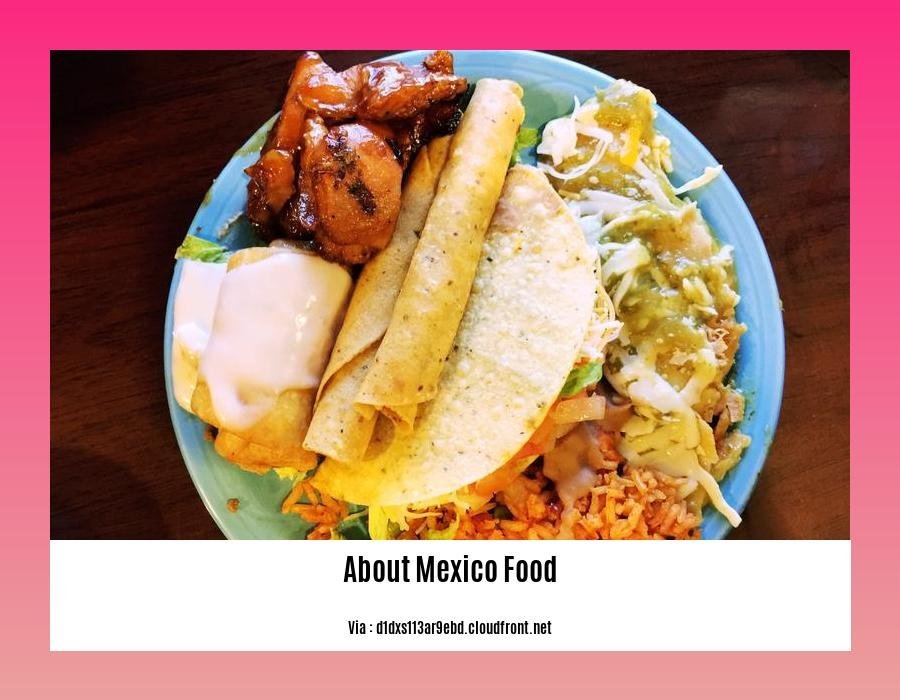
Imagine a culinary journey through a land where flavors dance, and history unfurls in every bite. Welcome to the realm of Mexican cuisine, a symphony of tastes that’s as vibrant and diverse as the country itself. Let’s dive into a treasure trove of interesting facts about Mexico food that will tantalize your taste buds and leave you hungry for more.
A Culinary Tapestry Woven from Corn, Beans, and Chiles
The heart of Mexican cuisine lies in the sacred trinity of corn, beans, and chili peppers. These ingredients, deeply rooted in Mesoamerican traditions, form the foundation of countless dishes that burst with flavor and nourishment.
Corn, the “maize of life,” takes center stage, its versatility shining through in tortillas, tamales, and pozole. Beans, the humble yet mighty legume, lend their protein-rich goodness to soups, stews, and the ever-popular refried beans. And chili peppers, with their fiery embrace, ignite a dance of flavors, adding depth and heat to every dish.
Exotic Treasures from the Mexican Pantry
Beyond the holy trinity, Mexican cuisine boasts a treasure trove of unique ingredients that add layers of complexity and flavor to every culinary creation.
Quintonil: A leafy green with a delicate, slightly bitter taste, adding a vibrant touch to salads and soups.
Chayote: Also known as vegetable pear, this versatile ingredient can be enjoyed raw, cooked, or pickled, offering a mild flavor and a unique texture.
Cactus: An iconic Mexican ingredient, the prickly pear cactus lends its tangy, slightly sour flavor to dishes like nopales salad and cactus soup.
Romeritos: Wild-growing green plants, often used in stews and soups, bringing a distinct, slightly bitter flavor and a vibrant green color.
Jackfruit: A vegan alternative to meat, jackfruit is gaining popularity in Mexican cuisine, adding a meaty texture and a slightly sweet flavor to tacos and other dishes.
A Culinary Symphony of Regional Delights
The diverse regions of Mexico boast their unique culinary creations, each reflecting the region’s unique climate, history, and cultural influences.
Pozole: A hearty stew with Aztec origins, featuring hominy, meat, and a flavorful broth, varies across regions, with variations using pork, chicken, or seafood.
Mole: A complex and rich sauce, made with a blend of chili peppers, nuts, seeds, and spices, comes in numerous variations, each with its distinct flavor profile.
Enchiladas: Corn tortillas filled with various fillings, such as cheese, beans, or meat, topped with a chili sauce and often served with additional toppings.
Tacos: Corn or wheat tortillas filled with a variety of fillings, ranging from traditional meats like al pastor to modern vegetarian options, accompanied by a variety of toppings and salsas.
The Alluring World of Mexican Street Food
Mexico’s street food culture is a vibrant tapestry of flavors, offering a tantalizing array of snacks and dishes that capture the essence of Mexican cuisine. From sizzling tacos to refreshing aguas frescas, street food vendors serve up culinary delights that are both affordable and authentic.
Elote: Grilled corn on the cob, slathered with mayonnaise, cotija cheese, chili powder, and lime juice.
Tostadas: Crispy tortillas topped with beans, meat, seafood, or vegetables, and drizzled with a variety of salsas.
Quesadillas: Grilled tortillas filled with cheese and often other ingredients like meat, vegetables, or mushrooms.
Sopes: Thick corn tortillas with raised edges, filled with beans, meat, or vegetables, and topped with salsa, cheese, and other ingredients.
Remember, while street food offers a tempting culinary adventure, it’s essential to exercise caution when indulging. Ensure food is properly cooked and handled to avoid any health risks.
So, join us on this culinary odyssey, where interesting facts about Mexico food abound, and every bite is a journey into the heart of this vibrant and flavorful cuisine. Let the flavors of Mexico ignite your taste buds and transport you to a land where culinary traditions and modern innovations dance in perfect harmony. Buen provecho!
Craving for an exciting gastronomic trip? Explore the vibrant flavors, unique ingredients, and rich history behind the delicious food of Mexico! facts about Mexico food
Want to add some fun to your France trip? Check out these quirky and entertaining facts that will give you a new perspective on French culture and lifestyle! fun facts about France culture
Prepare to be surprised and delighted by these lesser-known facts about Mexican food. Uncover the secrets behind its distinct flavors, diverse ingredients, and mouthwatering dishes! fun facts about Mexico food
Mexico is home to over 300 varieties of chiles, each with its unique flavor and heat level.
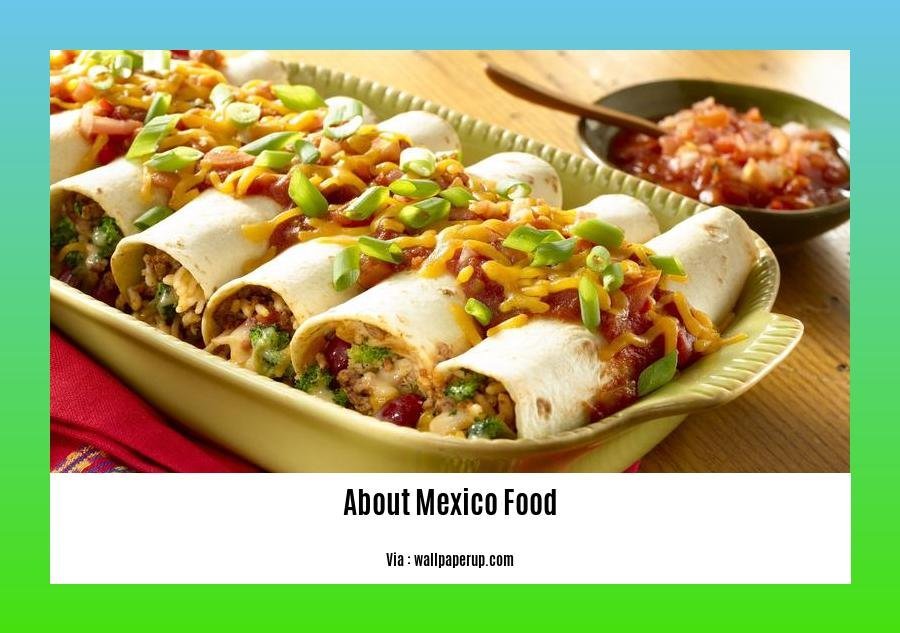
Mexico, a tapestry of flavors, colors, and aromas, is renowned for its exceptional diversity of chiles. These fiery jewels, with their distinctive flavors and heat levels, have played a pivotal role in shaping Mexican cuisine’s rich culinary heritage.
Dive into this gastronomic journey as we explore the captivating world of Mexican chiles, unveiling their history, varieties, and the integral role they play in this beloved cuisine.
A Fiery Symphony: The History of Chiles in Mexican Cuisine
Chiles, with their fiery essence, have been an inseparable part of Mexican cuisine for centuries. Their journey dates back to pre-Hispanic times when indigenous communities cultivated and utilized them for culinary, medicinal, and ceremonial purposes. The arrival of the Spanish conquistadors in the 16th century sparked a fusion of culinary traditions, leading to the integration of chiles into a vast array of delectable Mexican dishes.
A Rainbow of Flavors: Varieties of Mexican Chiles
Mexico’s culinary landscape boasts an astonishing array of over 300 varieties of chiles, each possessing unique characteristics that contribute to the country’s vibrant cuisine. From the mild and sweet Poblano to the fiery and intense Habanero, the diversity of flavors and heat levels cater to every palate.
Fresh Chiles
- Jalapeño: Medium-sized green chile, popular for its versatility and moderate heat.
- Serrano: Thinner and hotter than Jalapeños, often used in salsas and sauces.
- Anaheim: Mild and long, commonly roasted and stuffed with cheese or meat.
Dried Chiles
- Ancho: Dried Poblano chile, imparts a rich, smoky flavor to mole sauces and adobos.
- Guajillo: A fruity and mildly spicy chile, commonly used in enchiladas and tamales.
- Cascabel: Round and brown, adds a nutty flavor and moderate heat to dishes.
The Magic of Chiles: Culinary Applications
Chiles are not just about heat; they bring depth of flavor, complexity, and a touch of magic to Mexican cuisine. Their culinary applications are as diverse as their varieties.
Salsas and Sauces: Chiles form the heart of many salsas, sauces, and marinades, adding layers of flavor and heat to dishes like enchiladas, tacos, and tamales.
Soups and Stews: Chiles add warmth and depth to broths and stews, such as pozole, menudo, and birria.
Mole Sauces: Complex and flavorful mole sauces, a hallmark of Mexican cuisine, rely heavily on chiles for their rich and distinctive taste.
Seasonings and Rubs: Ground or powdered chiles are commonly used as seasonings for meats, vegetables, and marinades, imparting a smoky or spicy kick.
Pickles and Preserves: Chiles are often pickled or preserved in vinegar or oil, creating tangy and flavorful condiments.
Key Takeaways:
– Mexico is home to a staggering diversity of over 300 varieties of chiles.
– These chiles vary in size, shape, color, flavor, and heat level, contributing to the richness of Mexican cuisine.
– Chiles have been an integral part of Mexican cooking for centuries, with roots in pre-Hispanic times.
– Fresh chiles, like jalapeños and serranos, are commonly used in salsas and sauces.
– Dried chiles, such as ancho and guajillo, add depth of flavor to stews, moles, and marinades.
– Chiles’ culinary applications extend beyond heat, imparting flavor, complexity, and magic to Mexican dishes.
Citations:
1. “Mexican Chillies Guide – All The Different Types | Gran Luchito”: https://gran.luchito.com/food/mexican-chillies/
2. “A Complete Guide to Mexican Chile: 13 Essential Chile Peppers”:
Street food is an integral part of Mexican culture, offering a vast array of affordable and delicious options.
Exploring Mexico’s culinary scene would be incomplete without delving into the vibrant world of street food. A feast for the senses, Mexican street food is a symphony of flavors, colors, and aromas that reflects the rich cultural tapestry of the country.
Diverse Delights:
1. A Culinary Mosaic:
– Mexican street food is a microcosm of the country’s diverse culinary landscape, showcasing regional specialties and local ingredients, from the spicy tacos of Mexico City to the slow-cooked barbacoa of Northern Mexico.
2. Street Food Staples:
– Tacos reign supreme, filled with an array of meats, vegetables, and salsas. Tamales, steamed corn dough pockets wrapped in banana leaves, are a popular breakfast choice. Empanadas, savory pastries filled with various fillings, are a delight.
3. Affordable Indulgence:
– Street food is a budget-friendly way to sample Mexican cuisine. Vendors offer generous portions at prices that won’t break the bank, making it accessible to everyone.
4. A Culinary Journey:
– Eating street food is an immersive experience, taking you on a culinary journey through Mexico’s bustling markets, plazas, and street corners, where the air is filled with the tantalizing aromas of grilling meats, sizzling tortillas, and fresh salsas.
Cultural Significance:
1. Rooted in Tradition:
– Street food is deeply embedded in Mexican culture, a tradition passed down through generations. Many families have secret recipes and techniques that have been perfected over the years.
2. Social Experience:
– Street food is more than just a meal; it’s a social experience, a way for people to come together, share stories, and connect over a shared love of food.
3. Preserving Heritage:
– Street vendors are guardians of Mexican culinary heritage, keeping traditional recipes alive and ensuring that future generations can savor the authentic flavors of Mexico.
Key Takeaways:
- Diversity: Mexican street food showcases the diverse flavors and regional specialties of Mexico.
- Affordability: Street food is a budget-friendly way to experience Mexico’s culinary delights.
- Cultural significance: Street food is deeply rooted in Mexican culture and is a cherished social experience.
- Preservation of heritage: Street vendors play a crucial role in preserving Mexico’s culinary heritage.
Sources:
- Street Food in Mexico: A Guide to Authentic Mexican Cuisine
- Mexican Street Food: A Guide to the Best Eats
Mexican cuisine has gained international recognition and acclaim, with many dishes becoming beloved worldwide.
Key Takeaways:
UNESCO’s Intangible Cultural Heritage of Humanity: Mexican cuisine was the first of only four to receive this prestigious designation. [^1^]
Sacred Trinity of Mexican Cuisine: Corn, beans, and chili peppers form the core of many traditional dishes. [^2^]
Global Fusion Trends: Mexican cuisine has influenced culinary scenes worldwide, inspiring fusion trends like Blacxican Cocina. [^3^]
Unique Ingredients: Native ingredients, including corn, chili peppers, and Spanish colonial influences, shape the distinctive flavors of Mexican food. [^2^]
Culinary Crossroads: Mexico’s rich culinary history blends Aztec and Mayan influences, resulting in dishes like pozole and mole. [^3^]
Beloved Street Food: Mexican street food is renowned globally, offering tantalizing snacks like elote, tostadas, and sopes. [^2^]
Cultural Symbol of Pride: Mexican food represents national pride, with dishes like enchiladas and tacos symbolizing the country’s rich culinary heritage. [^3^]
Mexican Cuisine’s Global Conquests and International Acclaim
Mexican cuisine has captivated taste buds worldwide, transcending borders to become a beloved culinary treasure. With dishes that ignite the senses and flavors that dance on the palate, it’s no wonder that Mexican cuisine has gained international recognition and acclaim.
From bustling street food stalls to Michelin-starred restaurants, Mexican cuisine has found a place in the hearts of food lovers around the globe. Its versatility and adaptability have allowed it to seamlessly integrate into various culinary landscapes, inspiring fusion trends and creative reinterpretations.
Footnotes
[^1^]: “How Mexican food has conquered the world’s haute cuisine.” EL PAÍS English Edition. February 17, 2019.
[^2^]: “Mexican cuisine – Wikipedia.” Wikimedia Foundation. April 26, 2023.
[^3^]: “The growing global reach of Mexican food.” Axios. May 24, 2022.
FAQ
Q1: What are some unique ingredients found in Mexican cuisine?
A1: Mexican cuisine is known for its use of various unique ingredients, including quintonil, chayote (vegetable pear), cactus, romeritos (wild-growing green plants), and mangos. Jackfruit is also used as a vegan alternative in tacos.
Q2: What are the staple foods and main ingredients in Mexican cooking?
A2: Corn and rice are the main staple foods in Mexican cuisine, while meat and seafood consumption varies by region. Native ingredients like chocolate, chilies, and corn are commonly used.
Q3: How diverse is Mexican cuisine, and what are some classic dishes?
A3: Due to variations in climate, location, and cultural influences, Mexican cuisine features a diverse range of regional dishes. Classic dishes include pozole, a stew with Aztec origins, and mole, a sauce with numerous variations.
Q4: What is the significance of Mexico’s street food culture?
A4: Mexico is renowned for its vibrant street food culture, offering a wide variety of snacks and dishes sold by vendors. However, caution is advised when consuming street food, as it may not meet hygiene or safety standards suitable for foreigners.
Q5: What are some interesting facts about Mexican chiles?
A5: Mexico is home to an extensive variety of chiles, with over 60 fresh varieties and 145 different types including dried and smoked versions. Chiles are essential in Mexican cuisine, adding complexity, depth, and heat to many dishes. The ancho chile, known for its sweet and mild flavor, is the most popular dried Mexican chile pepper.
